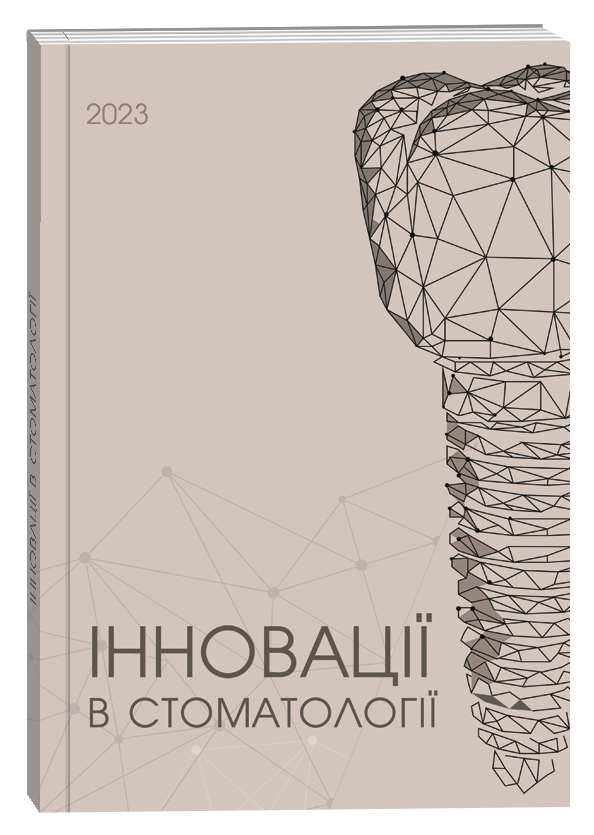ACCURACY OF ORTHOGNATHIC SURGERY USING THREEDIMENSIONAL DIGITAL PLANNING IN PATIENTS WITH TRANSVERSE MAXILLARY DEFICIENCY
DOI:
https://doi.org/10.35220/2523-420X/2023.4.16Keywords:
orthognathic surgery, three-dimensional digital planning, transverse maxillary deficiency, malocclusionAbstract
Introduction. The article is devoted to the improvement of orthognathic surgery techniques through the use of three-dimensional digital planning in order to increase the accuracy of surgical interventions for the correction of transverse maxillary deficiency. The aim of the study is to analyze the accuracy of orthognathic surgery using threedimensional digital planning in patients with TMD requiring surgically assisted palatal expansion (SARME) at the stage of preoperative orthodontic preparation. Materials and methods. The study used a sample of 50 patients with skeletal forms of jaw anomalies and deformities who were treated from 2019 to 2023. 50 patients with TMJ TD and sagittal/vertical malocclusion were divided into 2 groups: the main group (n=25): SARME with the use of Smile distractor (Titamed, Belgium) at the stage of preoperative orthodontic preparation and the control group (n=25): No or previously corrected TMJ TD. In both groups, orthognathic operations were performed according to a full digital protocol using 3D computed tomography (CT) data and virtual planning. The use of three-dimensional planning allowed us to optimize preoperative preparation and determine the optimal parameters of surgery. The results of the study demonstrated a significant increase in the accuracy of orthognathic operations, a reduction in the risk of recurrence and side effects with minor deviations from the planned indicators. The authors conducted a detailed analysis of the effectiveness of digital planning to ensure the accuracy of orthognathic surgery in patients with various forms of skeletal anomalies of the jaws. The scientific novelty lies in the confirmation of the effectiveness of SARME as a technique that allows to optimize preoperative preparation and improve the accuracy of orthognathic surgery in patients with transverse maxillary deficiency (TMD). It has been established that the use of the Smile distractor (Titamed, Belgium) for TMJ expansion allows to achieve a high level of accuracy of predictability of the result, which is a significant achievement in improving the quality of life of patients. The conclusions confirm the high efficiency of digital technologies in orthognathic surgery for patients with TD of the TMJ, which allows for better accuracy and predictability of treatment results, minimizing the risk of complications. Limitations of the study included the heterogeneity of the initial conditions of patients in terms of skeletal class, growth type, and the presence of an open or deep bite, which may affect the versatility and accuracy of the results.
References
Egermark-Eriksson, I., et al. (1990). A longitudinal study on malocclusion in relation to signs and symptoms of cranio-mandibular disorders in children and adolescents. The European Journal of Orthodontics, 12(4), 399–407. https://doi.org/10.1093/ejo/12.4.399
Grybauskas, S., et al. (2018). An interview with Simonas Grybauskas. Dental Press Journal of Orthodontics, 23(4), 14–35. https://doi.org/10.1590/2177-6709.23.4.014-035.int
Bays, R. A., & Greco, J. M. (1992). Surgically assisted rapid palatal expansion: An outpatient technique with long-term stability. Journal of Oral and Maxillofacial Surgery, 50(2), 110–113. https://doi.org/10.1016/0278-2391(92)90352-z
Brunelle, J. A., Bhat, M., & Lipton, J. A. (1996). Prevalence and distribution of selected occlusal characteristics in the US population, 1988–1991. Journal of Dental Research, 75(2_suppl), 706–713. https://doi.org/10.1177/002203459607502s10
Cureton, S. L., & Cuenin, M. (1999). Surgically assisted rapid palatal expansion: Orthodontic preparation for clinical success. American Journal of Orthodontics and Dentofacial Orthopedics, 116(1), 46–59. https://doi.org/10.1016/s0889-5406(99)70302-1
Betts, N. J., Vanarsdall, R. L., Barber, H. D., et al. (1995). Diagnosis and treatment of transverse maxillary deficiency. The International Journal of Adult Orthodontics and Orthognathic Surgery, 10(2), 75–96. https://pubmed.ncbi.nlm.nih.gov/9082002/
Franchi, L., & Baccetti, T. (2005). Transverse maxillary deficiency in Class II and Class III malocclusions: A cephalometric and morphometric study on postero-anterior films. Orthodontics and Craniofacial Research, 8(1), 21–28. https://doi.org/10.1111/j.1601-6343.2004.00312.x
Gogna, N., Johal, A. S., & Sharma, P. K. (2020). The stability of surgically assisted rapid maxillary expansion (SARME): A systematic review. Journal of Cranio-Maxillofacial Surgery, 48(9), 845–852. https://doi.org/10.1016/j.jcms.2020.07.003
Karabiber, G., & Yılmaz, H. N. (2021). Does unilateral surgically assisted rapid maxillary expansion (SARME) lead to perinasal asymmetry? Journal of Orofacial Orthopedics / Fortschritte der Kieferorthopädie. https://doi.org/10.1007/s00056-021-00333-y
Kurol, J., & Berglund, L. (1992). Longitudinal study and cost-benefit analysis of the effect of early treatment of posterior cross-bites in the primary dentition. The European Journal of Orthodontics, 14(3), 173–179. https://doi.org/10.1093/ejo/14.3.173
Lanigan, D. T., Hey, J. H., & West, R. A. (1990). Aseptic necrosis following maxillary osteotomies: Report of 36 cases. Journal of Oral and Maxillofacial Surgery, 48(2), 142–156. https://doi.org/10.1016/s0278-2391(10)80202-2
Loriato, L., & Ferreira, C. E. (2020). Surgicallyassisted rapid maxillary expansion (SARME): Indications, planning and treatment of severe maxillary deficiency in an adult patient. Dental Press Journal of Orthodontics, 25(3), 73–84. https://doi.org/10.1590/2177-6709.25.3.073-084.bbo
Mommaerts, M. Y. (1999). Transpalatal distraction as a method of maxillary expansion. British Journal of Oral and Maxillofacial Surgery, 37(4), 268–272. https://doi.org/10.1054/bjom.1999.0127
Northway, W. M., & Meade, J. B., Jr. (1997). Surgically assisted rapid maxillary expansion: A comparison of technique, response, and stability. The Angle Orthodontist, 67(4), 309–320. https://doi.org/10.1043/0003-3219(1997)067<0309:SARMEA>2.3.CO;2
Pogrel, M. A., Kaban, L. B., Vargervik, K., & Baumrind, S. (1992). Surgically assisted rapid maxillary expansion in adults. The International Journal of Adult Orthodontics and Orthognathic Surgery, 7(1), 37–41.
Proffit, W. R., Turvey, T. A., & Phillips, C. (1996). Orthognathic surgery: A hierarchy of stability. The International Journal of Adult Orthodontics and Orthognathic Surgery, 11(3), 191–204. https://pubmed.ncbi.nlm.nih.gov/9456622/
Schwestka-Polly, R. (2004). Fortschritte in der gelenkbezüglichen kieferorthopädisch-kieferchirurgischen Therapie. Informationen aus Orthodontie & Kieferorthopädie, 36(4), 205–218. https://doi.org/10.1055/s-2004-832448
Arnett, G. W., et al. (1999). Soft tissue cephalometric analysis: Diagnosis and treatment planning of dentofacial deformity. American Journal of Orthodontics and Dentofacial Orthopedics, 116(3), 239–253. https://doi.org/10.1016/s0889-5406(99)70234-9
Swennen, G. R. (2017). 3D Virtual Treatment Planning of Orthognathic Surgery: A Step-by-Step Approach for Orthodontists and Surgeons. Springer, Berlin, Heidelberg.
Wolford, L. M., Karras, S., & Mehra, P. (2002). Concomitant temporomandibular joint and orthognathic surgery: A preliminary report. Journal of Oral and Maxillofacial Surgery, 60(4), 356–362. https://doi.org/10.1053/joms.2002.31220








